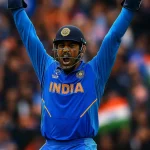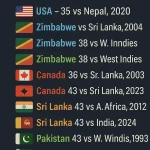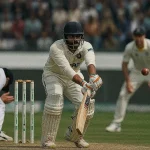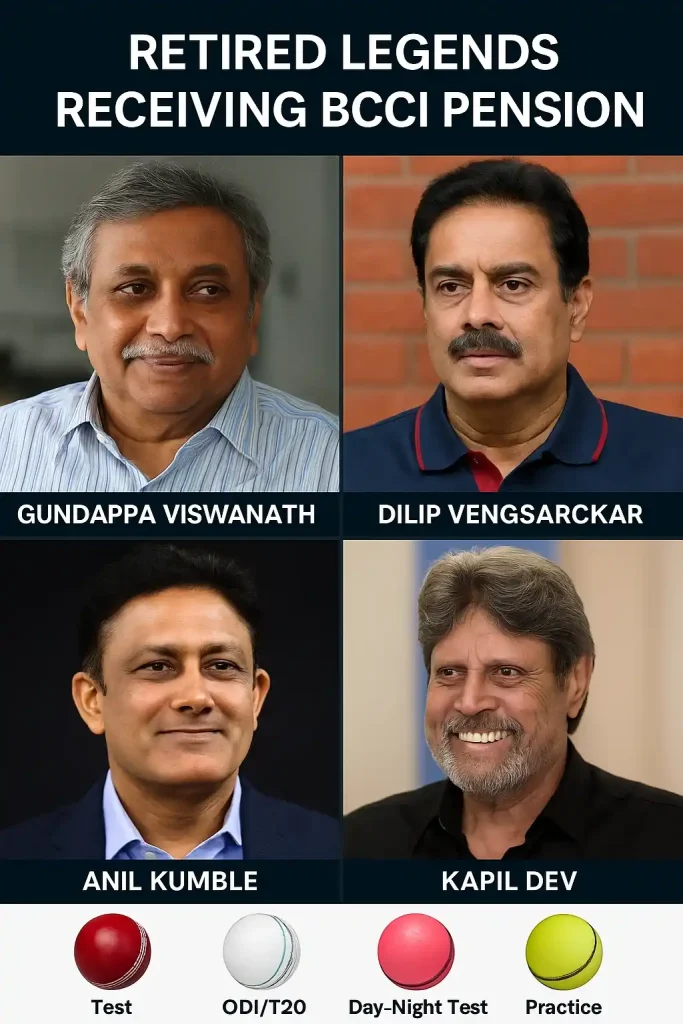
For a country that treats its cricketers like gods, you’d think their post-retirement life would be equally divine. But for years, it wasn’t. Many ex-players, even those who once wore the national cap, quietly faded into regular life — some teaching, some running shops, a few even battling financial distress. That’s why the BCCI pension scheme matters. Not because it’s perfect. But because it acknowledges something fundamental: service to the game deserves a safety net.
You don’t hear it much on commentary or in highlight reels. But behind the sixes, the records, and the fanfare, there’s now a quiet current of support flowing toward those who once gave their all on Indian soil and beyond. The BCCI pension isn’t just about money. It’s about memory. Gratitude. And finally, responsibility.
How the BCCI Pension Was Born and Why It Matters
The pension system didn’t always exist. For decades, Indian cricket was built on sweat and sacrifice, not contracts or retirement plans. Many former cricketers were left to fend for themselves after hanging up their boots. But by the mid-1990s, murmurs began to grow louder. Players who paved the way for modern stars had no medical cover, no fallback, and often, no recognition.
It was Jagmohan Dalmiya who first pushed the idea of a formal pension. Later, under Sharad Pawar and other administrators, the scheme gained momentum. Today, what we call the “BCCI pension” covers a wide range of players — from Test stalwarts to umpires and domestic workhorses.
This move didn’t just help financially. It sent a message: the board sees you, even when the cameras don’t.
Table 1: Categories and BCCI Pension Amounts (2024)
| Category | Monthly Pension (INR) |
| Test cricketers (25+ matches) | 70,000 |
| Test cricketers (10-24 matches) | 52,500 |
| Test cricketers (<10 matches) | 30,000 |
| First-class cricketers (15+ yrs) | 22,500 |
| Umpires (retired) | 22,500 |
| Women internationals | 30,000 |
These aren’t headline numbers. But they matter, especially to players who played in eras when match fees barely covered travel.
Who Qualifies for the BCCI Pension and What It Covers
Not every ex-player is on the list. The board has clear eligibility criteria. For male players, it depends on the number of matches and years played. For women and umpires, it hinges on national representation and tenure. One interesting aspect? Even players who played a single Test match can be eligible — a nod to how rare that achievement really is.
And this isn’t just about monthly disbursements. In recent years, the BCCI has started including one-time medical assistance, family support in case of player death, and occasional lump-sum recognition. The idea is simple: your contribution doesn’t vanish when your career does.
Why the BCCI Pension Isn’t Just About Money
I once spoke to a Ranji veteran from the ’80s. He never made it to the national team, but played 17 years of domestic cricket. When I asked him about the pension, he smiled. Not because it solved all his problems. But because it reminded him that someone remembered. That the 600 overs he bowled on dead tracks in Kanpur meant something.
That’s what the BCCI pension symbolizes. Dignity. It can’t erase the grind, the missed endorsements, or the spotlight that never came. But it softens the years that follow. And for many, that’s more than enough.
How the BCCI Pension Compares Globally
Let’s not kid ourselves — India is ahead in this regard. Many cricket boards, especially in developing nations, still don’t offer structured pensions. The ECB in England and CA in Australia have solid systems, but they’re tied closely to player associations and contracts.
The BCCI’s advantage? Deep pockets. With IPL revenues and a booming cricket economy, the board has the resources to sustain a long-term support system. And to their credit, they’ve used that power responsibly — at least on this front.
Table 2: Cricket Board Pensions – A Global Glance
| Board | Monthly Pension (Approx, USD) | Notes |
| BCCI (India) | $270-$840 | Varies by match count and category |
| ECB (England) | $1,000+ | Linked to PCA and county contributions |
| CA (Australia) | $900+ | Based on service, contract-based |
| PCB (Pakistan) | $150-$400 | Dependent on grade and national caps |
| SLC (Sri Lanka) | $100-$300 | Limited coverage, often delayed |
This context matters. It shows how India, despite past criticism, has created a structure that respects its cricketing history. Sure, improvements are always possible. But the foundation is strong.
The Role of Former Players in Strengthening the BCCI Pension Voice
What’s changed in recent years is player advocacy. Ex-cricketers are now vocal about their peers. Social media helps. So does the fact that many have become commentators or state administrators. Names like Anjum Chopra, VVS Laxman, and Javagal Srinath have openly supported pension upgrades.
In 2022, a one-time raise was announced. In 2023, medical assistance for former players and their families expanded. These changes didn’t come from boardrooms alone. They came from voices who once wore the jersey. And who knew that behind every international cap was a decade of unpaid toil.
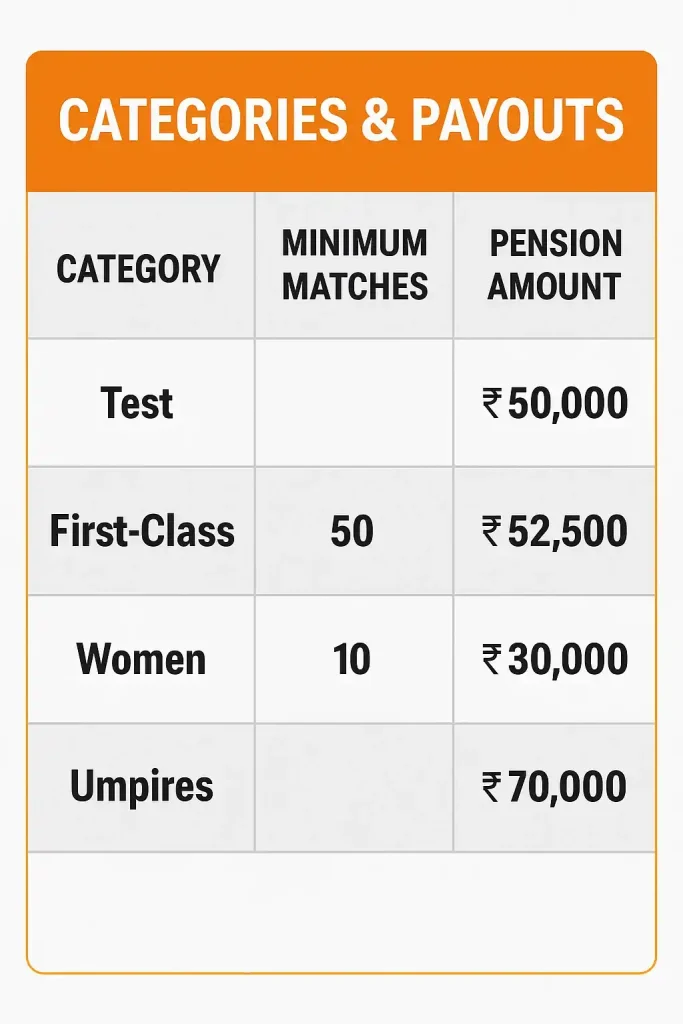
Challenges that Still Exist in the BCCI Pension Scheme
Even with solid improvements, the BCCI pension scheme still has noticeable blind spots. Icons from longer-ago regional circuits, whose records never filled digital clouds, often remain outside its net. Add to that the sluggish pace of paperwork, and a simple eligibility review can stretch past a whole season. Meanwhile, static monthly disbursements slowly lose value as inflation ticks upward, quietly shrinking buying power.
The emotional burden runs deeper than any number. Retiring leaves a player with more than a new budget; it reroutes an entire identity. One week, he is commuting between hotels, the next, he is listening to early-morning silence at home. Thrilling crowds are traded for the occasional text and a steep drop in invitations. Some adapt quickly, others wrestle with loneliness for years. The pension softens the fall, yet it cannot close that gap.
Where the BCCI Pension Goes from Here
Looking ahead, the future of the BCCI pension scheme is less about dramatic reform and more about a step-by-step evolution that honours the game and its people. To start, the Board plans to widen eligibility, extending protection to the many domestic players who quietly upheld the sport over decades yet slipped through the current net. Next, pensions will be adjusted every year in line with national inflation, safeguarding buying power so benefits do not quietly erode. Optional counselling and activity programs, from skill-up workshops to hobby clubs, will also be offered, helping retirees rediscover purpose and stay socially active long after the last match.
Perhaps the boldest idea is to enlist alumni as leaders. By running community clinics, coaching camps, and youth mentorships, they earn a modest stipend, stay connected to cricket, and give fresh talent the benefit of hard-earned wisdom. Under this model, the pension stops being a one-off payment and matures into a recurring partnership centred on service. After all, many former cricketers are still in their forties, and the lessons forged in pressure-cooker matches only gain depth with time. Treating them as continuing assets strengthens the sport and reminds fans that a player’s story does not close at thirty-five; in many senses, it is just warming up.
Final Over: What the BCCI Pension Really Represents
For every Tendulkar and Dhoni, there are dozens of players who carried water bottles, fielded at deep square, and batted at six in testing conditions. Their names won’t light up stadiums. But they are the soil in which Indian cricket grew.
The BCCI pension is, at its heart, a thank you. One that took too long to come. One that still needs work. But one that finally says: we saw you. We remember. And we’re grateful.

Meet Arjun Kushaan, a passionate cricket analyst at The Cricket24x7. From street matches in his childhood to competitive college tournaments, cricket has always been a central part of Arjun’s life. With a strong background in data analysis and a natural affinity for numbers, he brings a fresh, analytical lens to the game. At The Cricket24x7, Arjun blends his deep love for cricket with his data-driven approach to deliver detailed insights and well-rounded coverage for fans of the sport.

